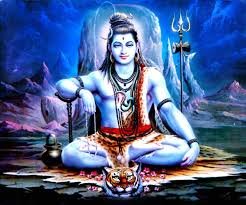Chaitra Navratri in 2015 (Vasant Navratri 2015) will begin from 21st of March to 29th of March, also known as Basant Navratri or Chaitra Navratri. The ninth day of Vasant Navratri overlaps with Ram Navami, hence it is also considered as Ram Navami at some places.
Navratri is alienated into sets of three days to worship three different aspects of the uppermost goddess or goddesses. During Navratri, different forms of mother Goddess are worshiped. On the first three days, people worship the goddess Durga (to bring energy & vitality) is worshiped. The next three days are devoted to Lakshmi (to bring immense wealth). And for the last three days, the devotees worship Saraswati (to impart one with right knowledge).
In order to seek blessings of Goddess Durga, devotees read the holy book Durga Saptashati (all 9 days of Chaitra Navratri). On the eighth and ninth day, Yagna or hawan is conducted to honour Goddess Durga to offer her departure. Our culture follows the tradition of serving food (Puri, Shrikhand, basundi) and offering some gifts or money to girls called as Kanyas. Kanyas meant girls who are unmarried. They are considered as Goddess Durga, and the offerings take place on 8th day of Chaitra Navratri. In some regions, a young boy also complements them who represent Bhairav; he is considered as protector against all evils. Fast is observed by devotees during all the nine days of Navratri. Prayers are also offered for good health and prosperity throughout these days.
Auspicious Dates of Chaitra Navratri in 2015
Vasant Navratri Day 1 – Ghatsthapana – 21 March 2015
Vasant Navratri Day 2 – Sindhara Dooj, Dwitiya – 22 March 2015
Vasant Navratri Day 3 – Gaur Teej, Saubhagya Teej, Tritiya – 23 March 2015
Vasant Navratri Day 4 – Varadvinayak Chaturthi – 24 March 2015
Vasant Navratri Day 5 – Sri Laxmi Panchami Vrat, Naag Vrat Pujan – 25 March 2015
Vasant Navratri Day 6 – Skand Shashthi, Yamuna Jayanti – 26 March 2015
Vasant Navratri Day 7 – Mahasaptami Vrat, Chaiti Chat, Vijaya Saptami – 27 March 2015









